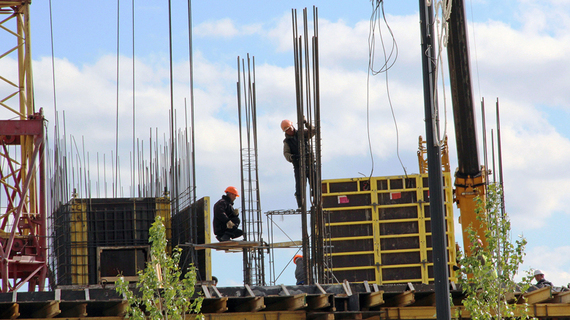Wow, what a fabulous report. It is all the good news we've been seeing, feeling, getting in dribs and drabs, but sensing that the new economy, driven by clean energy and technology, was smoking hot and would be the driver for future generations.
Wonderful news.
Economic Growth and Climate Action -- A Formula for a Low Carbon World

Copyright Shynar Jetpissova/World Bank
A new report by the Global Commission on the Economy and Climate, of which I am a member, shows climate action delivers local development benefits as well as emissions reductions. In fact, smart policy choices can deliver economic, health and climate benefits for developed and developing countries alike.
Multilateral Development Banks like the World Bank Group can play a crucial role in helping countries follow a transition to low carbon growth by using scarce government resources smartly and leveraging much larger, long-term private investments.
The report makes key recommendations for turning hurdles to reduce greenhouse gas emissions into areas of growth. Among them:
Focus on cities:
- Urban areas should implement low-carbon strategies by 2020 and prioritize better planning and investment in public transport, building efficiency, and better waste management.
- Protect forests and increase agricultural productivity: Bring together forest countries, developed economies and the private sector to halt deforestation by 2030 and restore degraded farmland. This would enhance agricultural resilience, strengthen food security, and improve livelihoods for agrarian and forest communities.
- Invest in clean energy: We can only provide clean energy for all if we reduce the cost, and we need to use energy more efficiently.
Clearly, the opportunities and benefits, including for future generations, outweigh the downside.
The report finds, for example, that comprehensive investments into low-carbon urban developments could save around $17 trillion globally by 2050. And investments in energy efficiency could boost cumulative economic output globally by $18 trillion by 2035. The report also finds that businesses are already driving a growing $5.5 trillion global market for low-carbon goods and services.
Most importantly, if implemented, the recommendations could achieve almost all emission reductions that are needed to keep global temperatures from rising less than the critical 2°C by 2030.
But the key to success is cooperation between governments, cities, communities, development banks and the private sector. We need to leverage existing partnerships and resources, whether domestic or multilateral.
There is a lot of international momentum for climate action leading up to COP 21, the critical climate talks in Paris end of this year. At the UN Climate Summit in 2014, more than 73 countries and 1,000 companies and investors signaled their support for action through pricing carbon to drive investments in a cleaner economy. In June the G7 recognized the need for deep emission cuts. Multilateral banks can play a key role in achieving policy changes and shifting resources to low-carbon investments.
A new joint report shows that over the last four years, the six multilateral banks have provided over $100 billion in climate finance. In 2014 alone they committed a combined $28 billion, the largest one-year total so far.
The World Bank Group is the largest provider of climate finance of the six multilateral development banks, accounting for more than one-third of the total. The World Bank Group alone provided U.S. $11.8 billion. More than 20 percent of the World Bank Group's total finance involved climate finance that year.
So at the Bank we are already acting. We are helping our client countries assess the risks, access finance and build resilience.
For example, for more than a year we have screened all country strategies and operations in the poorest countries for disaster and climate risk. These actions are key to achieving our goals of ending poverty and increasing shared prosperity. We are therefore fully aligned with the recommendations of the Global Commission on the Economy and Climate.
The need to avoid a 2°C warmer world and eventually achieve carbon neutrality in the global economy guides our efforts in five key areas: building low-carbon, climate resilient cities; moving forward on climate smart agriculture and nurturing forest landscapes; accelerating energy efficiency and investment in renewable energy, including hydropower; supporting work on ending fossil fuel subsidies and developing carbon pricing to get prices right for emissions.
There is no such thing as economic growth without climate action and we have the evidence to prove it.

No comments:
Post a Comment